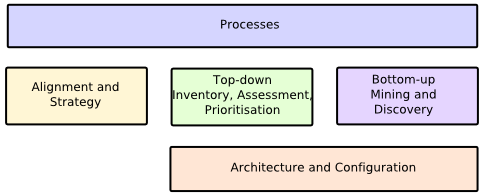
| Previous | Next | Printer friendly |
The last big problem
The ongoing management of legacy systems is the last big problem in IT. It requires a level of co-operation that we have not yet achieved.
In IT, we know how to do most things. We know how to write programs. We know how to design systems. We know how to manage projects. We know how to deliver services. There are problems, and there is room for improvement, but as an industry we understand the problems and have got solutions to meet them.
The one area we have not to got to grips with is the ongoing management of the IT that we have. We often call these "legacy systems" - the legacy that the previous generation of managers and designers left with us.
People agree that there is a huge value in better management of the IT that we have. It eats 70% of our budgets. It is a major source of risk. It is the starting point for all new work. It stops us responding quickly to business change.
In other parts of IT, we know what to do. But when it comes to the ongoing management of legacy systems, we just do not know what to do. Or rather, there are a number of competing viewpoints for how we should approach it.
I can see at least five different IT disciplines that have to come together.

We need to be better at IT alignment and strategy. A lot of IT strategy is so focussed on business change that we undervalue the IT that we already have and the role it plays in delivering value every day. We need to understand how to align our long-term management with business objectives, to make the case for the investment that we need.
We need processes. These need to go beyond the day-to-day service delivery processes, and include processes for the identification, justification and execution of preventative maintenance.
We need information and analysis to guide our decisions. I split this into two: top-down, management information to inventorise and assess IT and identify priorities. We also need the bottom-up, technical information that you get from discovery tools such as code scanners.
Underpinning this we need a thorough record of all the architecture and configuration of our IT.
We know the benefits of tackling the problems of better long-term management. We see the value of our own piece of the jigsaw. But in our enthusiasm, we overemphasise the value of our own piece in isolation and underemphasise the value of working with others.
I include myself in this criticism. Our system quality management approach and Metrici Advisor tool help with the inventory, assessment and prioritisation area. I am enthusiastic about it because it is the area that is least developed in most organisation.
But I need to work with others too. Tackling legacy systems needs better IT strategy. It needs new processes. It needs tools for discovering the IT that we have. It needs architecture and configuration.
There are huge rewards for better ongoing management of our IT. We need to work together to reap them.
Next: The blame gameSubscription
Latest newsletter:
Magical metadata
We use the term "metadata-driven" to describe IT solutions in which functionality is defined in data. Taking this to the extreme can provide unparalleled levels of speed, simplicity and versatility.
Read full newsletter
System governance
System governance helps you implement high-quality systems, manage existing systems proactively, and improve failing systems.
Copyright © 2005-2015 Minimal IT Ltd. All rights reserved.
Minimal IT: research, training, consultancy and software to reduce IT costs.
